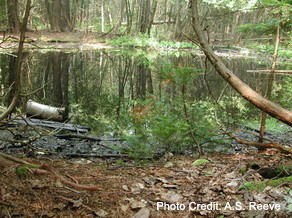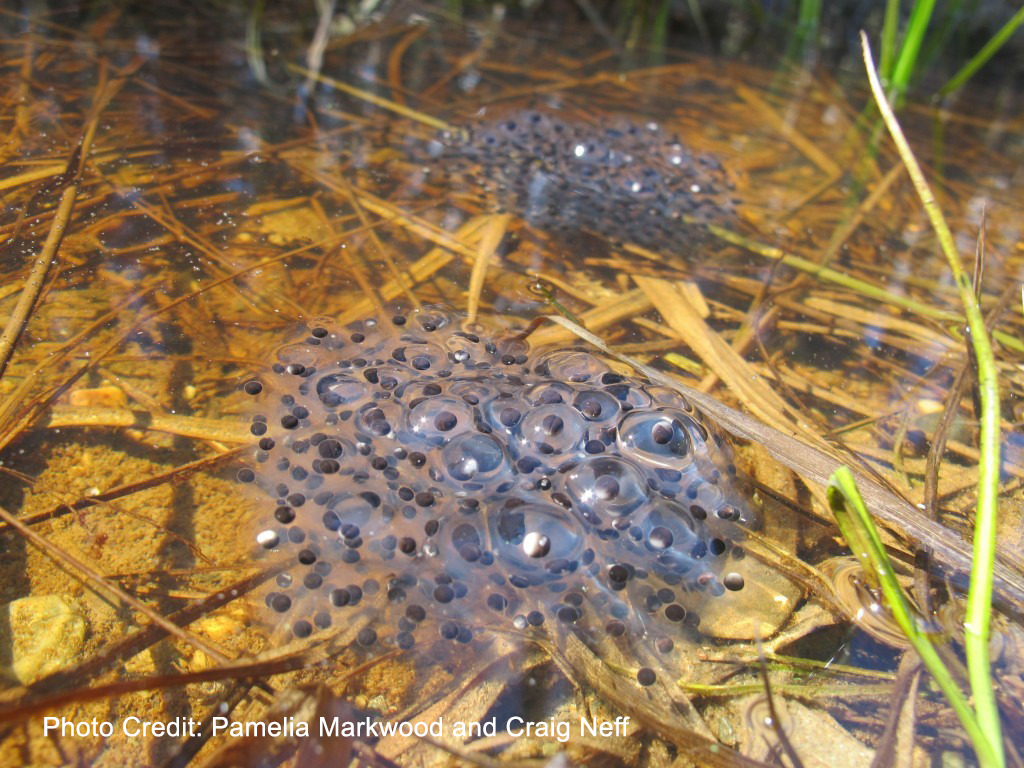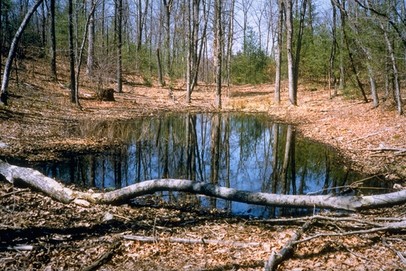Tess Howard, Undergraduate Research Assistant, University of Maine
Jared Homola, PhD student, University of Maine
Why is it so important to protect vernal pools? Why are they important ecosystem features? Why are they important to our project? In this article, we hope to shed some light on these important questions.
One of the most important reasons for conserving vernal pools is simply because their unique properties make them relatively rare on our landscape. One such feature is that these temporary wetlands fill with water for only a few months during the spring and summer, making them inhospitable to fish. Without fish, vernal pools become important places that allow many vertebrate and invertebrate species to carry out the portions of their life cycles where they are particularly vulnerable without fear of predation.
The research being conducted by the Of Pools and People team has its sights on finding out what factors are most important for preserving the continued health of vernal pools. For instance, links between urbanization and vernal pools have not been well studied, therefore habitat fragmentation caused by humans could be strongly affecting the wellbeing of our small amphibian friends. In one portion of our research, we are using landscape genetics to understand more about the gene flow between different vernal pools and whether or not there are barriers affecting the distribution of wood frogs and spotted salamanders and if so, whether those barriers are having an effect on wood frog and spotted salamander genetics. With that knowledge, we will be able to advise improved conservation practices of vernal pool habitats and the areas around them in order to preserve the connectivity among pools, allowing these systems to thrive.



